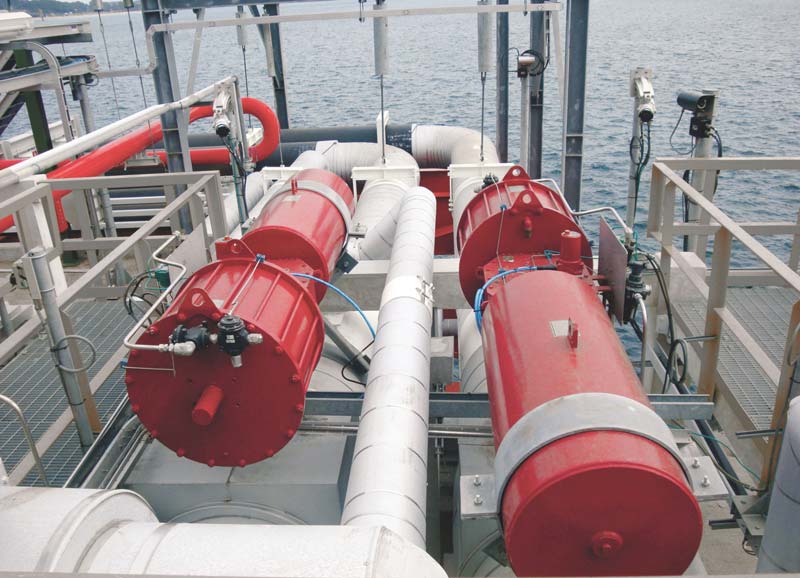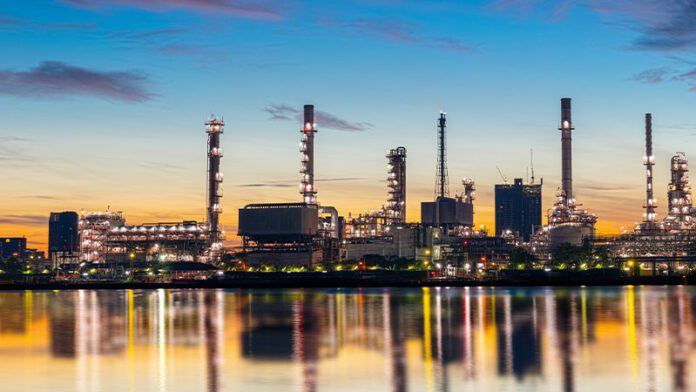Liquified Natural Gas (LNG) is an increasingly important part of the global energy mix. LNG exporting has increased exponentially in the last few years, with the USA alone doubling exports to Europe in 2022¹.
Text and images by Rotork
Global demand for natural gas is expected to grow by 11%² towards the end of the decade. Due to the growth in demand for natural gas and the increasing relevance of LNG, liquefaction capacity is expected to double by 2030, and regasification capacity is expected to grow by 50%.
Many parts of the world lack the infrastructure to accommodate the quantities required, as the gas needs to be converted back from its liquid form to be usable. The expected investment in LNG liquefaction, regasification, and transportation infrastructure over the next eight years exemplifies how LNG is being embraced as the lower-emission hydrocarbon bridge of the energy transition.
This expanding infrastructure requires effective flow control throughout the process, from liquefaction and extraction to regasification, transport and distribution, meaning that at all stages, actuators are required to control the process reliably
Efficient flow control in LNG
The extraction, processing and transport of LNG around the world must be completed in a safe and reliable way. Flow control plays a key role at every stage. This includes the extraction of gas, to its liquefaction, to transport, (both in pipelines and LNG carriers) to regasification to natural gas and distribution/onwards transportation.

There are specific requirements when storing and transporting LNG. The extreme cold temperatures involved (-162 °C is needed to transform the gas to a liquid state) demand valves and associated equipment are suitable for use at these low temperatures.
Due to the hazardous environment, the valves used to control the flow of LNG must be suitable to operate at very low temperatures reliably; cryogenically safe valves are primarily made from 316 stainless steel, which maintains body strength at these very low temperatures. They must meet safety standards such as BS 6364. The flow control equipment that controls the valves, such as actuators, must also provide safe and reliable operation within consistently hazardous environments.
Plants demand suitable products for critical applications in the LNG industry ensuring safety, maximising plant uptime and operational efficiency. Intelligently designed and well-maintained flow control systems will not only allow for efficiency and increased profit within the industry but will allow for compliance with environmental standards and ensure safety.
Controlling cryogenic valves
When moving the raw gas via pipelines, typically, the valves are between 36” to 72” in diameter and sent at very high pressures to transfer the large volumes needed to feed an LNG liquefaction facility. To make the natural gas into a liquefied state, the process involves pressuring the gas and lowering the temperature through compression trains and cryogenic systems, which enables the gas to become a liquid.
Through this process, the high-pressure gas remains a very dangerous medium, and the safety mechanisms associated with emergency shutdown systems are critically important. Because of this criticality, LNG operators need to rely on proven solutions, which is what Rotork has supplied the industry since the inception of the first LNG facilities in the 1960s. Rotork’s pneumatic actuation systems enable large valves to close at high speed and high torque required for emergency shutdown systems.
Rotork-manufactured GP and CP pneumatic scotch yoke actuators have been used on LNG terminals globally to operate ball and butterfly cryogenic valves in storage and regasification plants. Both these actuators are certified to IP 66M/67M and feature corrosion-resistant cylinders that make them suitable for hazardous environments.
Flow control products along the LNG supply chain need to have a high standard of safety certification. Safety Integrity Level (SIL) is an established system of standards to indicate the performance requirements of a safety system. It is part of a functional safety plan that includes techniques, technologies, standards and procedures that help operators protect against hazards. Effective safety systems should adopt a life-cycle approach to industries that deal with hazardous processes. Both the GP and CP product ranges are certified for suitable use at SIL3 as a single device in accordance with IEC 61508, indicating their effectiveness at dealing with hazardous substances.
Under normal operation, many of these valves remain in an open position. However, the operators need to be fully assured that the valves will close when needed. So, to ensure operability, Rotork offers a partial stroke testing mechanism that can be built into the actuator controls. This gives the operator the opportunity to test the functionality of the system without having to fully close the valve and interrupt the process.
Intelligent electric solutions can assist in the reduction of emissions
The use of electric actuators is another obvious, easy choice in the fight against unnecessary emissions. Use of electric actuators immediately negates bleed gas emissions that can be produced by spring diaphragm pneumatic actuators. Electric actuator replacement (also known as ‘retrofit’) for natural gas-powered pneumatic devices on control valves can help reduce or eliminate methane and Volatile Organic Compounds (VOC) emissions. This update of equipment to allow for a reduction in emissions can ultimately improve the operator’s return on investment and profits.

Throughout the LNG process, emissions can be reduced significantly. Rotork has been involved in the upgrading of a 4,000-kilometre pipeline, a liquefied natural gas terminal and an underground storage facility in Belgium. The part-turn intelligent IQT actuators installed on the site operate butterfly valves on boilers in unmanned gas pressure-reducing stations across Belgium that reduce the pressure of natural gas so that it can flow through a network operating at a lower pressure or be transferred to an end consumer facility.
This operation brings cooling of the natural gas and therefore requires natural gas to be pre-heated by boilers to keep the downstream temperature within a certain range. The previous actuators on this site used gas-powered pneumatics, leading to undesirable venting of greenhouse gas into the atmosphere. Rotork Site Services installed the electric actuators on the site to reduce the environmental footprint of the operation. The valves that the actuators control regulate the flow of gas and now provide a more precise regulation duty, are more reliable and prevent any emissions that the previous pneumatic actuators may have created.
The installation of IQT actuators allowed for extremely accurate flow control, no emissions, easy set-up, diagnostics and reliable operation. Rotork Site Services retrofitted the IQTs onto existing valves on multiple sites. They provide continuous position tracking at all times, even without power. They are explosion- proof to international standards and are protected against water ingress (double-sealed to IP66/68 at 7m for 72 hrs).
Maintaining intelligent flow control assets
Intelligent flow control assets within LNG maximise operational reliability and efficiency; this article has focused on the importance of these assets within the LNG industry, but their maintenance and smooth running is of equal importance. LNG flow control assets perform daily in challenging operating and environmental conditions. They often work within environments with extreme temperatures and excess vibration, yet they must operate reliably.
Maintenance programmes that support assets in working effectively (ensuring the availability of assets at all parts of the LNG journey) are essential. Asset failure or obsolescence has dangerous implications, including reduced quality, financial loss, and even reputation damage. Unplanned downtime is undesirable and costly but sites which have a complete life cycle asset management programme (such as Rotork’s Reliability Services programme), are likely to see improved performance, increased uptime and an important decrease in unplanned maintenance costs.
These service programmes offer a steady, set cost to plant operators. A service plan for flow control assets throughout the LNG journey should have a holistic view of an asset’s life cycle, with flexibility and customer choice, allowing customers a bespoke approach to maintenance.
Conclusion
The natural gas market is rapidly expanding, and to meet this growing demand, more natural gas will need to be extracted, liquified, transported, and turned back into gas. These processes need precise and efficient flow control that can operate in challenging environments while also reducing overall emissions as much as possible across the supply chain.
The ability to liquify then regasify this gas means countries in every corner of the world can access it. The LNG industry is complex, but with efficient and reliable flow control equipment such as actuators, LNG production, transportation and distribution can be conducted in a safe, productive and profitable way. Effective flow control and associated systems play a vital role at all stages of the LNG journey, meeting the ever-growing increase in demand.
References
1. US doubles LNG exports to Europe (washingtonexaminer.com)
2. IEA World Energy Outlook
About this Featured Story
This Featured Story is an article from our Valve World Magazine, May 2023 issue. To read other featured stories and many more articles, subscribe to our print magazine. Available in both print and digital formats. DIGITAL MAGAZINE SUBSCRIPTIONS ARE NOW FREE.
“Every week we share a new Featured Story with our Valve World community. Join us and let’s share your Featured Story on Valve World online and in print.”



